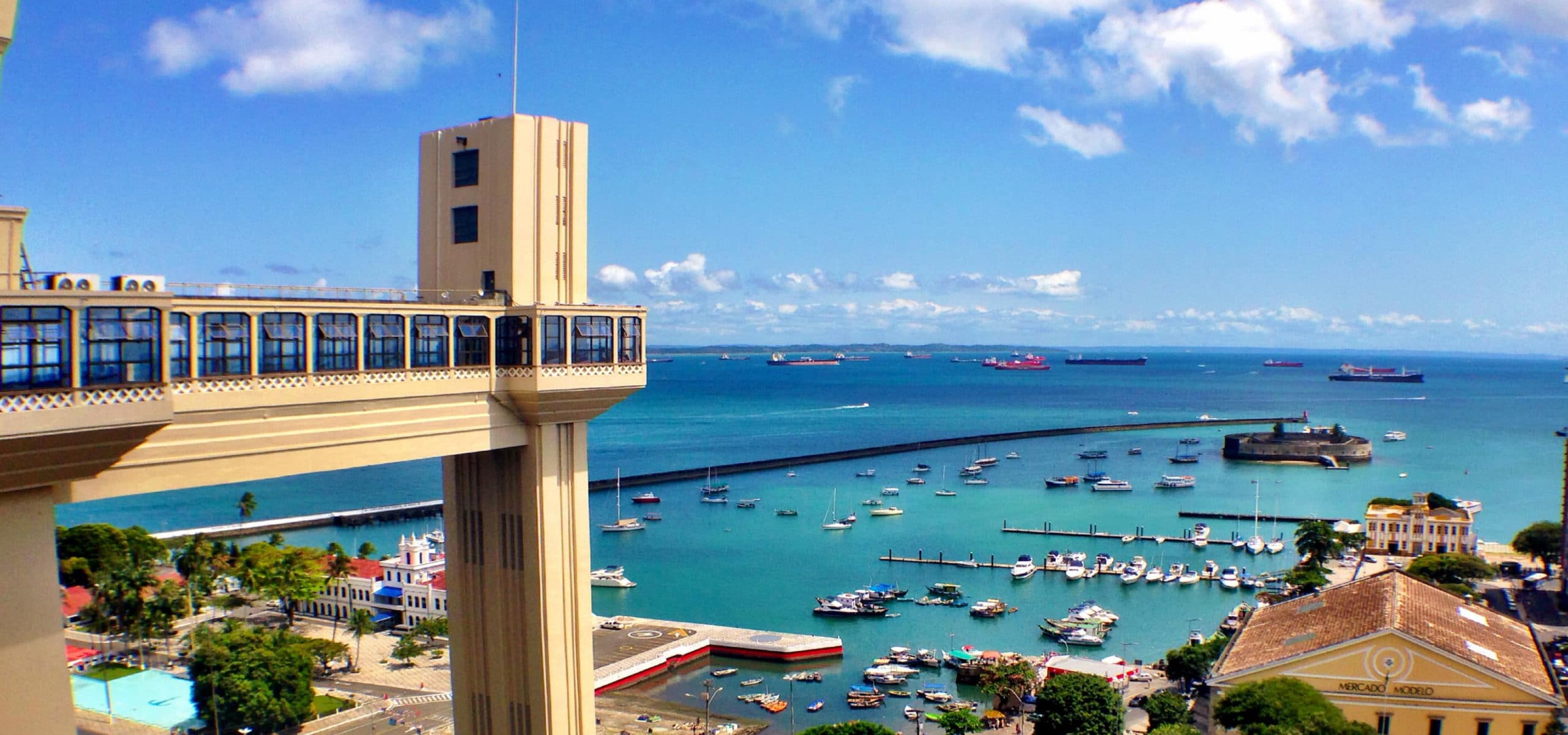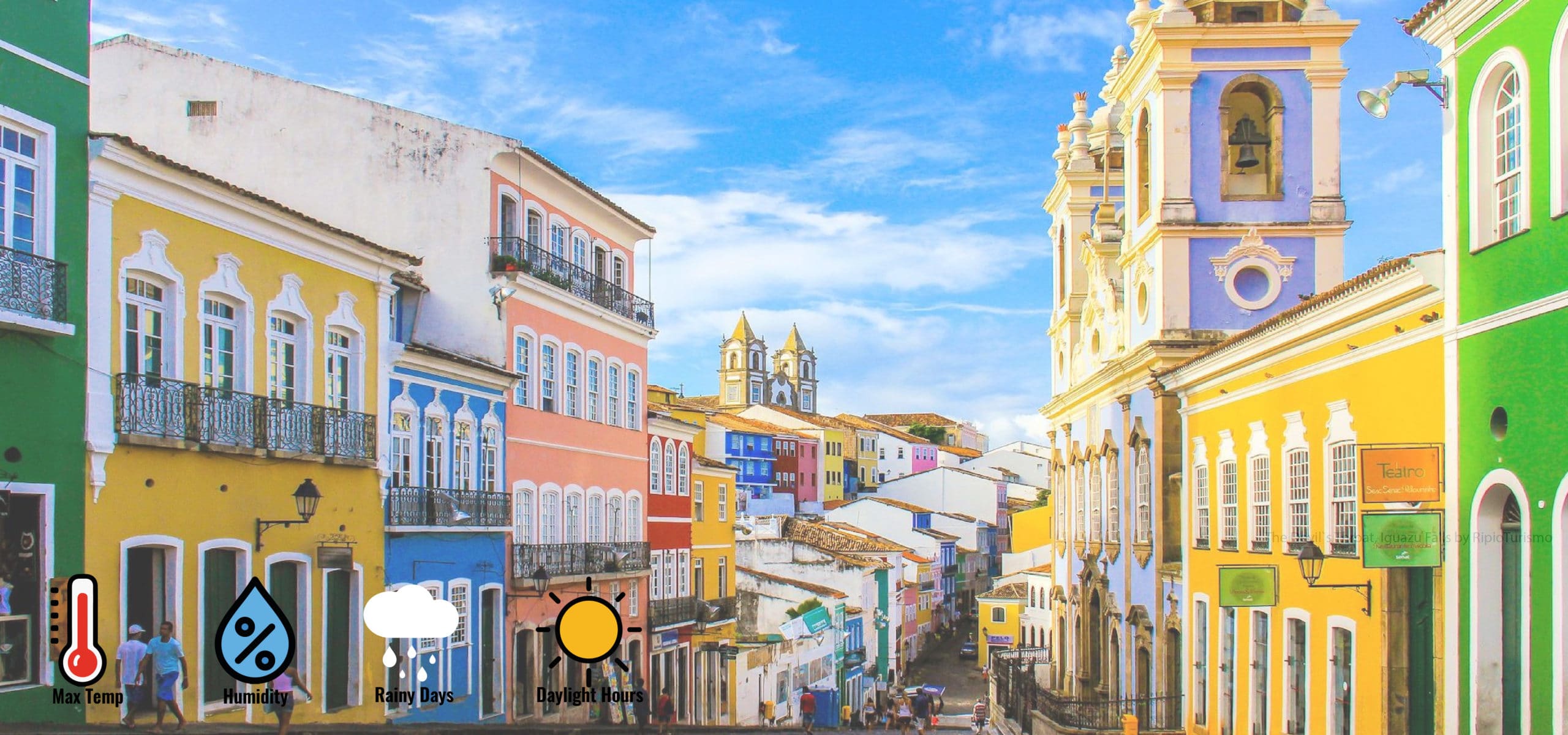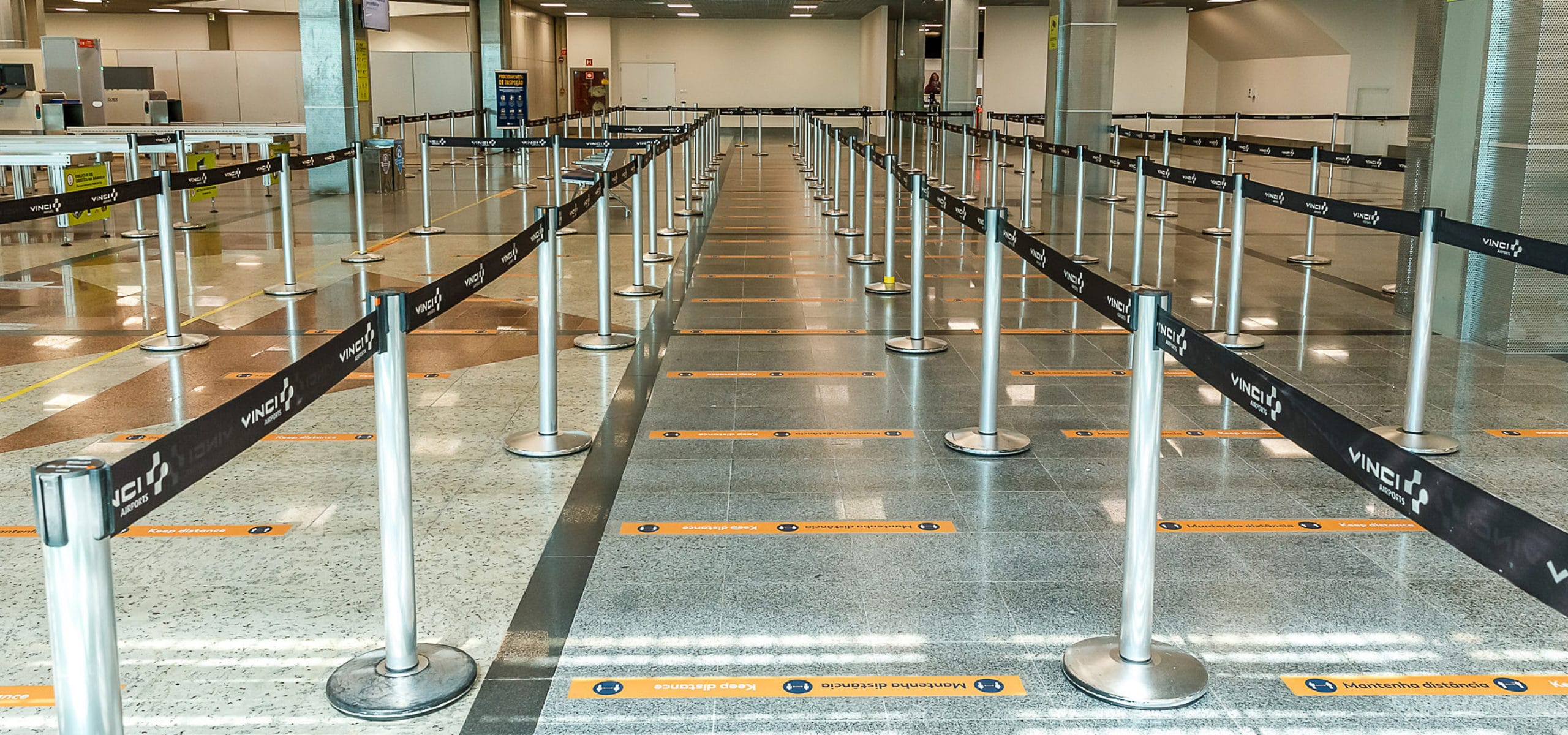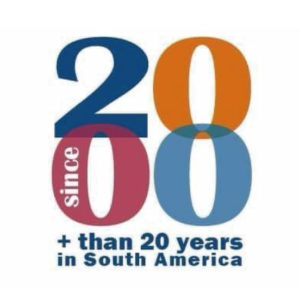What to see in Salvador de Bahia?
Salvador, the capital of the northeastern Brazilian state of Bahia, is famous for its Portuguese colonial architecture, Afro-Brazilian culture, and tropical coastline. The Pelourinho neighborhood is its historic center, with cobblestone streets that open into large squares, colorful buildings and Baroque churches. But there are a wide variety of places to visit in Salvador. Take a look to the following list:
Todos los Santos Bay (Baia de Todos os Santos)
One of the most important things about Salvador is the incredible position it occupies on Brazil’s coast. It sits pretty much halfway down the country on the Baía de Todos os Santos, or Bay of All Saints. Larger than Guanabara Bay in Rio de Janeiro, it is the largest in the country and a crucial factor in how the city came to be, and to remain, a trading and transport hub. Salvador’s situation also means that it is one of the few places in Brazil where viewers can watch the sun set in the west.
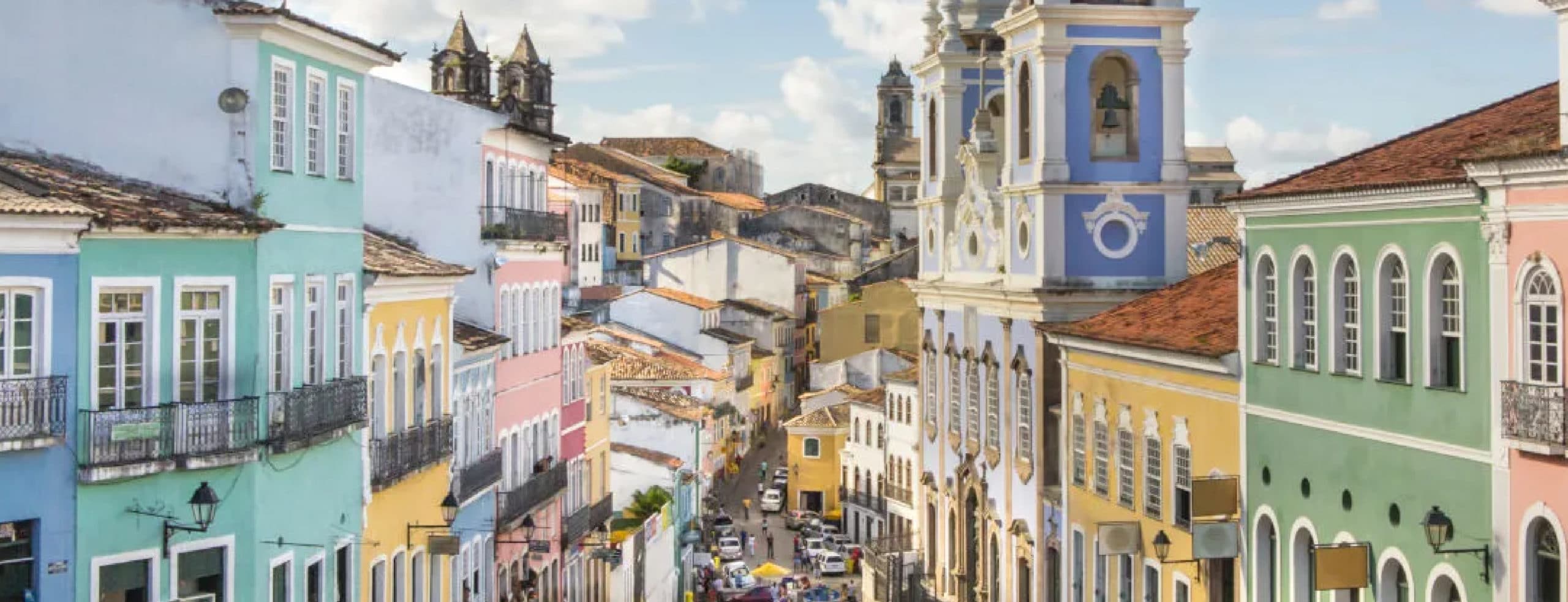
Pelourinho
The centerpiece of the Cidade Alta is the Pelourinho, a Unesco-declared World Heritage site of colorful colonial buildings and magnificent churches. As you wander the cobblestone streets, gazing up at the city’s oldest architecture, you’ll realize that the Pelô is not just for tourists. Cultural centers and schools of music, dance and capoeira pack these pastel-colored 17th- and 18th-century buildings. The area has undergone major restoration work – which remains ongoing – since 1993 thanks to Unesco funding. Admittedly, the Pelô has lost a lot of its character in the process, but to say that it is now safer and better preserved is an understatement.
Mercado Modelo and Lacerda`s Elevator
The Model Market, also known as “Mercado Modelo” in Portuguese, is a place where you can find since clothes to typical foods, as the famous Bahian chili peppers. It was built in 1861 and has suffered two fires, but now is working safely. Here comes one tip: when you get there, remember to bargain. The sellers usually can make good discounts.
After visiting the Market Model, the next stop is the Lacerda’s Elevator, which is located in front of the market. People must pay a symbolic value to go up. This place is a common elevator, with 72 meters in length, but the magic happens when you leave it: an amazing view of the Bay of All Saints shows up. It’s a postcard of Salvador and every tourist needs to see it.
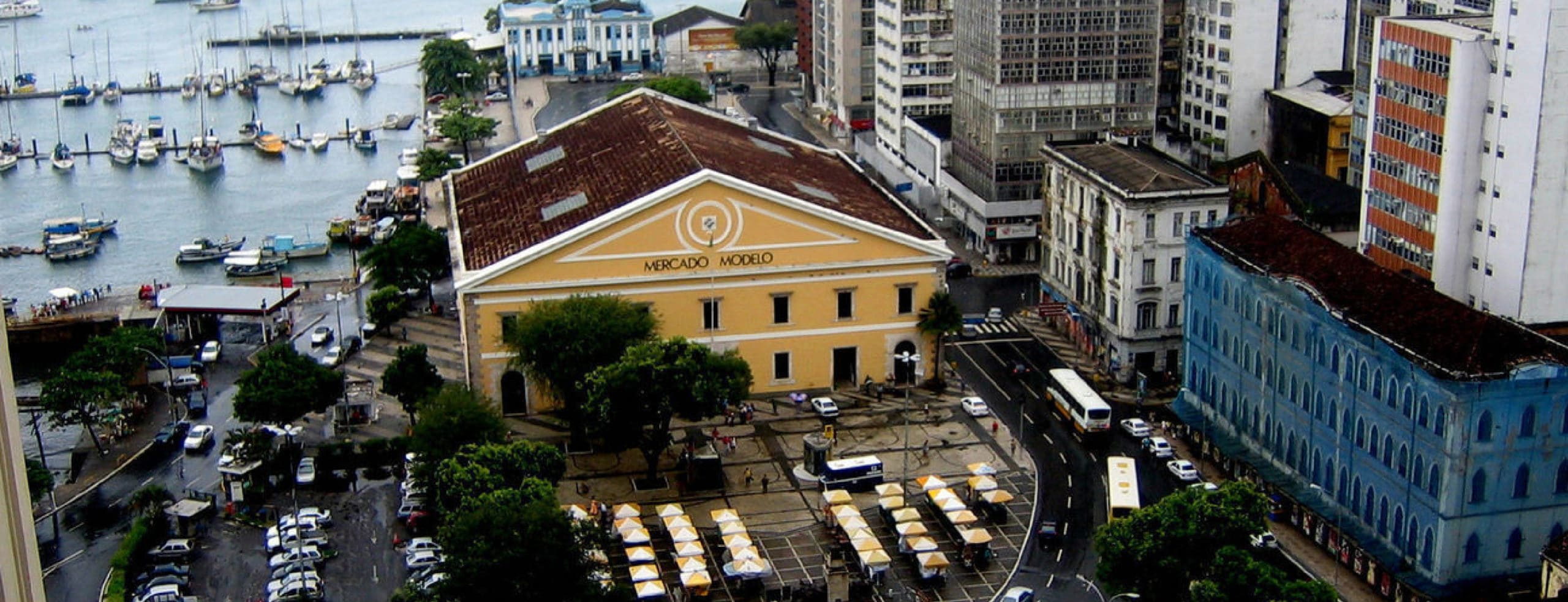
Bonfim’s Church
Salvador has 372 churches and one of the most famous is the Bonfim’s Church. It was built in 1772 with a neoclassic style inside. This is the place where happens the “Lavagem do Bonfim” when religious and tourists go there to watch Bahian women cleaning the temple with “água de cheiro” (a mix of flowers’ water and sap lavender). This event occurs every second Thursday of the year. Besides, Bonfim’s Church is the place where people can put the famous colored bracelets and make three knots for three different wishes.
Cathedral Basilica of Salvador
Built by Jesuits on the site of their very first church in what is now Salvador, the city’s cathedral is a vast 17th century building on the Terreiro de Jesus square. It is statuesque but unassuming on the outside but glittering with gold inside, and is the venue for frequent concerts and events, as well as church services.
Feira São Joaquim
São Joaquim is a grid of narrow alleys stuffed full of everything you might ever need. It is a proper locals’ market, so don’t be surprised by the live animals for sale and the many strange Brazilian fruits, spices and dried foods. The set-up, plus the sacks of pink salted shrimp, make for striking photos.
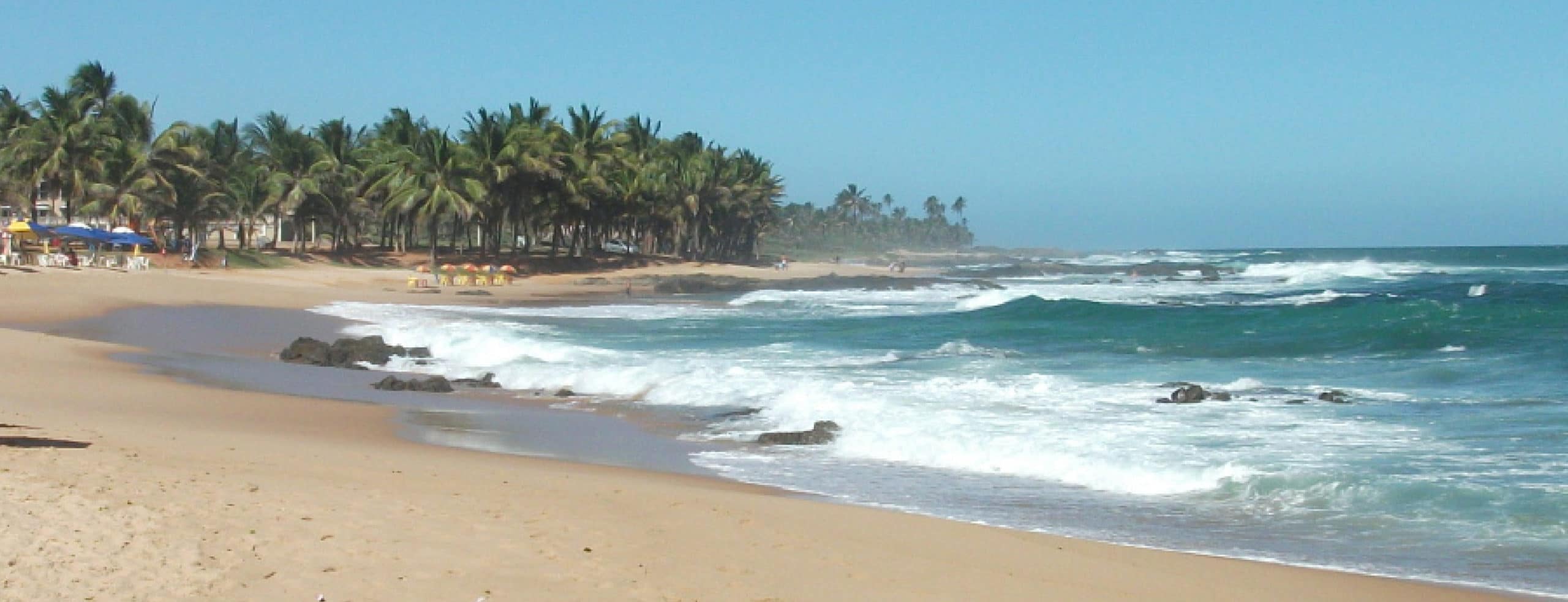
Flamengo`s and Itapua`s Beaches
Considered one of the bests beaches in Salvador, Flamengo’s Beach is recommended to friends and family, including children, because it’s a safe and calm place. It’s possible to rent a tent with the sellers and stay all day for a cheap price. They also offer chairs and tables, so consumers can be comfortable and just enjoy the beach.
Vinicius de Moraes, an unforgettable Brazilian singer, composed: “It’s good to stay an afternoon at Itapuã, listening to the sea at Itapuã”. This song reflects the beauty of an amazing beach in Salvador, nowadays one of the most common postcards. On the other hand, Itapuã’s Beach can be really crowded on weekends, so it’s recommended to visit during the week. The beach was blessed with natural pools and calm sea, besides the known warm water that is common in the northeast region. Itapuã also owns a lighthouse, where people can watch the sea and the boats passing by.
Morro de Sao Paulo
Located south of the city of Salvador, on the northern tip of Tinharé Island, Morro de São Paulo is a unique little village where everything is done on foot, and the scenery is truly incredible. The town is almost as old as Brazil itself, having been founded only 35 years after the arrival of the first Portuguese expeditions. As a matter of fact, the island had strategic military importance in Brazil’s earlier days – and one of the island’s main touristic attractions is the so-called Portaló, a porch that was part of a fort built do contain the Dutch invasions of the 17th century.
Today, Morro de São Paulo is better-known as one of the best destinations for thomerse who want to escape the hustle and bustle of city life and enjoy paradise. The island is closed for cars – except for ambulances and police vehicles – and tourists can access it by ferry or plane.
There is no shortage of things to do in and around Morro de São Paulo, with a good variety of gorgeous beaches and plenty of tourist agencies to help you plan your day. For the more adventurous, the village beaches have lots of opportunities for surfing, kitesurfing and other water sports. If you’re looking for something even more extreme, there is the famous zip line at Primeira Praia, 70 meters high and 350 meters long, which ends up with an exhilarating dunk right into the water.
However, one of Morro de São Paulo’s best qualities is in its tranquility and relaxed atmosphere. With no cars and surrounded by nature, visitors to the village often feel they are a million miles away from civilization and the bustling big city life.

